200以上 verify p(x)=3x+1 x=-1/3 131804-Verify p(x)=3x+1 x=-1/3
Simplify x(3x1) Simplify by multiplying through Tap for more steps Apply the distributive property Reorder Tap for more steps Rewrite using the commutative property of multiplication Move to the left of Simplify each term Tap for more steps Multiply by by adding the exponents Tap for more stepsTo get `tan(x)sec^3(x)`, use parentheses tan(x)sec^3(x) From the table below, you can notice that sech is not supported, but you can still enter it using the identity `sech(x)=1/cosh(x)` If you get an error, doublecheck your expression, add parentheses and multiplication signs where needed, and consult the table belowIf f(x) = 3x² 1 and g(x) = 1 – x, the value of (f – g)(2) is 14 Further explanation Function is a relation which each member of the domain is mapped onto exactly one member of the codomain There are many types of functions in mathematics such as
Find The Zeros Of The Polynomial F X 4 3x 5x 2 3 Verify The Relationship Between The Zeros Its Coefficients Quora
Verify p(x)=3x+1 x=-1/3
Verify p(x)=3x+1 x=-1/3-Simplify the first part 3x2x124 to 5x16 then divide p(x)= (4x16)/(12x) or p(x)=4(x4)/(12x) I don't think it can be simplified furtherTo get `tan(x)sec^3(x)`, use parentheses tan(x)sec^3(x) From the table below, you can notice that sech is not supported, but you can still enter it using the identity `sech(x)=1/cosh(x)` If you get an error, doublecheck your expression, add parentheses and multiplication signs where needed, and consult the table below



Verify That 5 2 And 1 3 Are The Zeros Of The Cubic Polynomial P X 3x 3 Youtube
To get `tan(x)sec^3(x)`, use parentheses tan(x)sec^3(x) From the table below, you can notice that sech is not supported, but you can still enter it using the identity `sech(x)=1/cosh(x)` If you get an error, doublecheck your expression, add parentheses and multiplication signs where needed, and consult the table below1/x1/3=1/3x Simple and best practice solution for 1/x1/3=1/3x equation Check how easy it is, and learn it for the future Our solution is simple, and easy to understand, so don`t hesitate to use it as a solution of your homework If it's not what You are looking for type in the equation solver your own equation and let us solve it(10pts) Verify (do Not Solve) That Y(x) = 3x 2x1/3 Is A Solution To 3xy' Y = 12x This problem has been solved!
Compute answers using Wolfram's breakthrough technology & knowledgebase, relied on by millions of students & professionals For math, science, nutrition, historyDivision Algorithm For Polynomials With Examples Example 1 Divide 3x 3 16x 2 21x by x 4 Sol Quotient = 3x 2 4x 5 Remainder = 0 Example 2 Apply the division algorithm to find the quotient and remainder on dividing p(x) by g(x) as given below p(x) = x 3 – 3x 2 5x – 3 and g(x) = x 2 – 2 Sol We have, p(x) = x 3 – 3x 2 5x – 3 and g(x) = x 2 – 2Hence, p(0)= 1, p(1) = 0, p(2) = 3, for the equation p(x) = (x−1)(x1) Question 3 Verify whether the following are zeroes of the polynomial, indicated against them (i) p(x) = 3x1, x=−1/3
Click here👆to get an answer to your question ️ Verify mean value theorem for the function f(x) = x^3 5x^2 3x , in the interval a, b , where a = 1 and b = 3 Find all cepsilon (1, 3) for which f^1(c) = 0Therefore, the quantity shown may not be available when you get to the storeC(3x−x2) if 0 ≤ x≤ 2 0 otherwise is the probability density function of the random variable X (a) Find c Solution We integrate and set this equal to 1 This gives us c= 3/10 (b) Find P{−1 ≤ x≤ 1} Solution P{−1 ≤ x≤ 1} = Z 1 −1 f(x)dx= Z 0 −1 0dx Z 1 0 3 10 (3x− x2)dx = 3 10 (3x2 2 − x3 3) 1 0 = 7 (c) Find EX



P X 3x 1 X 1 3 Verify Whether The Following Are Zeroes Of The Polynomial Brainly In



1 Solve The Following Equations And Verify The Answer A 3x 2 1 X 8 B
To get `tan(x)sec^3(x)`, use parentheses tan(x)sec^3(x) From the table below, you can notice that sech is not supported, but you can still enter it using the identity `sech(x)=1/cosh(x)` If you get an error, doublecheck your expression, add parentheses and multiplication signs where needed, and consult the table belowVerify that 3, 1, are the zeroes of the cubic polynomial p(x) = 3x 3 – 5x 2 –11x – 3 then verify the relationship between the zeroes and the coefficients Since, most general form of cubic polynomial is ax 3 bx 2 cx d When, we compare the given cubic polynomial with the general form, we getThe random variable X is the number of heads in these 10 tosses, and Y — the number of heads in the first 3 tosses In spite of the fact that Y emerges before X it may happen that someone knows X but not Y Conditional probability



Verify Whether The Following Are Zeroes Of The Polynomial Indica
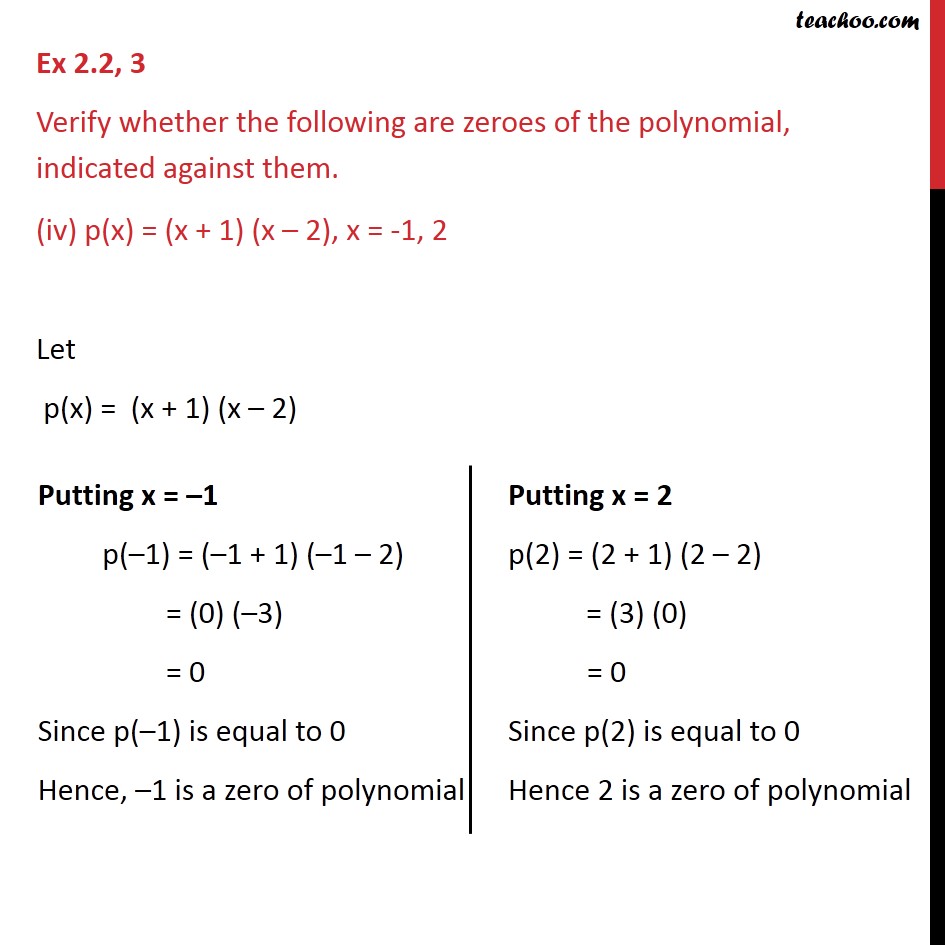


Ex 2 2 3 Verify Whether Following Are Zeroes Of The Ex 2 2
Prove that { 1 , 1 x , (1 x)^2 } is a basis for the vector space of polynomials of degree 2 or less Then express f(x) = 2 3x x^2 as a linear combination3) Solve the equation x 2 25 = 0 Solution x 2 25 = (x 5)(x 5) => we have to solve the following 2 equations x 5 = 0 or x 5 = 0 so the equation have two decisions x = 5 and x = 5 Related Resources Polynomial identities quiz Simplifying polynomial expressions problems with solutions Factoring polynomials problems withWhen a polynomial having degree more than 2 is divided by x2 the remainder is 1if it is divided by x3 then remainder is 3find the remainder,if it is divided by x2x3 If 3 and 3 are two zeros of the polynomial p(x)=x⁴x³11x²9x18, then find the remaining two zeros of the polynomial



Verify Whether P X 3x 1 X 1 3 2 3 Is The Zero Of The Polynomial Indicated Against It Brainly In



Using The Remainder Theorem Find The Remainder When F X Is Divided By G X And Verify The Result By Actual Division F X 4x 4 3x 3 2x 2 X 7 G X X 1
Keeping in the spirit of (1) we denote a geometric p rv by X ∼ geom(p) Note in passing that P(X > k) = (1−p)k, k ≥ 0 Remark 13 As a variation on the geometric, if we change X to denote the number of failures before the first success, and denote this by Y, then (since the first flip might beZigya App Verify that 3, 1, are the zeroes of the cubic polynomial p (x) = 3x3 – 5x2 –11x – 3 then verify the relationship between the zeroes and the coefficients Since, most general form of cubic polynomial is ax 3 bx 2 cx d When, we compare the given cubic polynomial with the general form, we get a = 3, b = –5Given f(x)=(8/7)(1/2)^x, x=1,2,3 VERIFY that each of the following function is a probability mass function and DETERMINE the requested probabilities (2 answers for each) Thank you!



Verify Whether The Following Are Zeroes Of The Polynomial Indica



Ex 2 4 1 Optional Verify Numbers Are Zeroes Of Cubic Polynomials
Transcript Example 5 Verify that 3, 1, ( 1)/3 are the zeroes of the cubic polynomial p(x) = 3x3 5x2 11x 3, and then verify the relationship between the zeroes and the coefficientsVerify that 3, 1, 1/3 are the zeroes of the cubic polynomial p(x) = 3x^2 – 5x^2 – 11x – 3 and then verify the relationship between the zeroes asked Sep 28, in Polynomials by Chandan01 ( 512k points)Verify that 3, 1, 1/3 are the zeroes of the cubic polynomial p(x) = 3x^2 – 5x^2 – 11x – 3 and then verify the relationship between the zeroes asked Sep 28, in Polynomials by Chandan01 ( 512k points)



Ex 2 2 3 Verify Whether Following Are Zeroes Of The Ex 2 2



Ex 2 4 1 Optional Verify Numbers Are Zeroes Of Cubic Polynomials
Quotient q(x) = x – 2 and Remainder r(x) = –2x 4 According to division algorithm Dividend p(x) = Divisor g(x) x Quotient q(x) Remainder r(x) 275 Views Answer Verify that the numbers given alongside of the cubic polynomials below are their zeroes Also, verify the relationship between33 Find roots (zeroes) of F(x) = 2x 3 3x 211x6 Polynomial Roots Calculator is a set of methods aimed at finding values of x for which F(x)=0 Rational Roots Test is one of the above mentioned toolsFind (3 x) 3 The power that we are expanding the bracket to is 3, so we look at the third line of Pascal's triangle, which is 1 3 3 1 So the answer is 3 3 3 × (3 2 × x) 3 × (x 2 × 3) x 3 (we are replacing a by 3 and b by x in the expansion of (a b) 3 above) Generally



Andhra Pradesh Ssc Class 10 Solutions For Maths Polynomials Cbse Tuts



Verify That 1 2 1 2 Are Zeroes Of Cubic Polynomial 2x 3 X 2 5x 2 Also Verify The Relationship Brainly In
Using the formula \cos(3x) = 4\cos^3(x) 3\cos(x) is actually quite useful, but first we have to do x=2y , then we get 8y^3 6x 1 = 0 Now we have the 43 ratio and we can sub in y=\cos(\theta)In order to verify the values are zeros of polynomial p(x), we must replace the variable x with the given values If p(x)=0, then that given value is zero of polynomial p(x) (i) p(x)=3x1 Put x=− 3 1, we get p(x)=3(− 3 1)1=−11=0 So, x=− 3 1 is the zero of the polynomial p(x) (ii) p(x)=5x−π Put x= 5 4, we get p(x)=5( 5 4)−π=4−π =0 So, x= 5 4Step 1 Equation at the end of step 1 (((x 3) 3x 2) 3x) 1 = 0 Step 2 Checking for a perfect cube 21 x 33x 23x1 is not a perfect cube Trying to factor by pulling out 22 Factoring x 33x 23x1 Thoughtfully split the expression at hand into groups, each group having two terms Group 1 3x1 Group 2 3x 2 x 3


Q Tbn And9gcrgv2jrkuiac5il8ahm0b O6pmsoo9cmtg8bpl6ob8 Usqp Cau


Check Whether X2 3x 1 Is A Factor Of 3x4 5x3 7x2 2x 2 Mathematics Topperlearning Com Cj90z54ee
Verify that 3, 1, 1/3 are the zeroes of the cubic polynomial p(x) = 3x^2 – 5x^2 – 11x – 3 and then verify the relationship between the zeroes asked Sep 28, in Polynomials by Chandan01 ( 512k points)Free equations calculator solve linear, quadratic, polynomial, radical, exponential and logarithmic equations with all the steps Type in any equation to get the solution, steps and graph(i) p(x) = 3x 1, x = – 1/3 Given p(x) = 3x 1 Putting x = – 1/3 p((−1)/3) = 3 ((−1)/3) 1 = 1 1 = 0 Since p((−1)/3) is equal to 0 Therefore, x = (−1)/3 is a zero of the given polynomial


2



Verify That 3 1 1 3 Are The Zeroes Of The Cubic Polynomial P X 3x 3 5x 2 11x 3 Brainly In
Y= (2x)/3 Let f(x) be denoted by y,thus y= 3x2 Now interchange x and y,it becomes x= 3y2 Solve for y, y= (2x)/3 This is f^(1) xWhen a polynomial having degree more than 2 is divided by x2 the remainder is 1if it is divided by x3 then remainder is 3find the remainder,if it is divided by x2x3 If 3 and 3 are two zeros of the polynomial p(x)=x⁴x³11x²9x18, then find the remaining two zeros of the polynomial1 x 3 x 8' Quality Pine Board Please Note Prices, promotions, styles and availability may vary by store and online Inventory is sold and received continuously throughout the day;


Verify That 5 2 And 1 3 Are The Zeroes Of The Cubic Polynomial P X 3x 3 10x 2 27x 10 Sarthaks Econnect Largest Online Education Community



P X 3x 1 X 1 3 Verify Zeroes Of Polynomial Show Method Also Brainly In
In order to verify the values are zeros of polynomial p(x), we must replace the variable x with the given values If p(x)=0, then that given value is zero of polynomial p(x) (i) p(x)=3x1 Put x=− 3 1, we get p(x)=3(− 3 1)1=−11=0 So, x=− 3 1 is the zero of the polynomial p(x) (ii) p(x)=5x−π Put x= 5 4, we get p(x)=5( 5 4)−π=4−π =0 So, x= 5 4To get `tan(x)sec^3(x)`, use parentheses tan(x)sec^3(x) From the table below, you can notice that sech is not supported, but you can still enter it using the identity `sech(x)=1/cosh(x)` If you get an error, doublecheck your expression, add parentheses and multiplication signs where needed, and consult the table belowFind the zeroes of the polynomial x 2 3x 10 and verify the relation between its zeroes and coefficient Asked by Topperlearning User 26th Jul, 17, 0919 AM Expert Answer


Divide The Polynomial F X 3x2 X3 3x 5 By The Polynomial G X X 1 X2 And Verify The Division Algorithm Mathematics Topperlearning Com Owy9z5lkk



Verify That 3 1and 1 3 Are Zeroes Of Cubic Polynomial P X 3x3 5x2 11x 3 And Verify Relationship Between Zeroes And Coefficients Math Polynomials Meritnation Com
Question 1)Suppose That F(x) = Ex For X > 0 Determine The Following Probabilities Round Your Answers To 4 Decimal Places P(X>1) = P(1Question 3 Verify whether the following are zeroes of the polynomial, indicated against them (i) p(x) = 3x 1, x = 1/3 (ii) p(x) = 5x – π, x = 4/54x 3 3x 2 x 1 Simplify ————————————————— x Checking for a perfect cube 31 4x 3 3x 2 x 1 is not a perfect cube Trying to factor by pulling out 32 Factoring 4x 3 3x 2 x 1 Thoughtfully split the expression at hand into groups, each group having two terms


Cbse 10 Math Ncert Solutions



P X 3x 1 X 1 3 I P X 3x 1 X
Dividend p(x) x 3 – 3x 2 x 2 Divisor g(x) = ?2(x7)4(3x1)=17 One solution was found x = 7/10 = 0700 Rearrange Rearrange the equation by subtracting what is to the right of the equal sign from both sides of theAfter you enter the expression, Algebra Calculator will plug x=6 in for the equation 2x3=15 2(6)3 = 15 The calculator prints "True" to let you know that the answer is right More Examples Here are more examples of how to check your answers with Algebra Calculator Feel free to try them now For x6=2x3, check (correct) solution x=3 x6=2x



Ncert Solutions For Class 9 Maths Chapter 2 Polynomials Ex 2 2 Cbsetuts Com


Find The Zeros Of The Polynomial F X 4 3x 5x 2 3 Verify The Relationship Between The Zeros Its Coefficients Quora
Click here👆to get an answer to your question ️ Verify that 3, 1, 13 are the zeroes of the cubic polynomial p(x) = 3x^3 5x^2 11x 3 and then verify the relationship between the zeroes and the coefficientsThe expectation will be EX = Z 100 0 xf(x)dx = Z 10 0 x p 2 p 2 80 dx Z 90 10 x 1 p 2 80 dx Z 100 90 x p 2 p 2 80 dx = 1 p 2 80 p 2 x2 2 10 x=0 x2 2 90 x=10 p 2 x2 2 100Verify that 3, 1, 1/3 are the zeroes of the cubic polynomial p(x) = 3x^2 – 5x^2 – 11x – 3 and then verify the relationship between the zeroes asked Sep 28, in Polynomials by Chandan01 ( 512k points)



Example 5 Optional Verify 3 1 1 3 Are Zero Of Cubic Polynomial



Verify If The Following Polynomials Are Zeros Of The Polynomials Indicated Against Brainly In
EC02 Spring 06 HW3 Solutions February 2, 06 4 Problem 231 Solution (a) If it is indeed true that Y, the number of yellow M&M's in a package, is uniformlyDivision Algorithm For Polynomials With Examples Example 1 Divide 3x 3 16x 2 21x by x 4 Sol Quotient = 3x 2 4x 5 Remainder = 0 Example 2 Apply the division algorithm to find the quotient and remainder on dividing p(x) by g(x) as given below p(x) = x 3 – 3x 2 5x – 3 and g(x) = x 2 – 2 Sol We have, p(x) = x 3 – 3x 2 5x – 3 and g(x) = x 2 – 2See the answer Show transcribed image text Expert Answer Previous question Next question Transcribed Image Text from this Question 1 (10pts) Verify (do not solve) that y(x) = 3x 2x1/3 is a solution to 3xy' y = 12x


2


Verify That 3 2 1 Are The Zeros Of The Cubic Polynomial P X X 3 2x 2 5x 6 And Verify The Relation Between It Zeros And Coefficients Sarthaks Econnect Largest Online Education Community
Conditioning on the discrete level Example A fair coin is tossed 10 times;


Verify That 3 1 1 3 Are The Zeroes Of The Cubic Polynomial P X 3x 3 5x 2 11x 3 Sarthaks Econnect Largest Online Education Community


Cbse 9 Math Cbse Polynomials Ncert Solutions



By Remainder Theorem Find The Remainder When P X Is Divided By G X I P X X 3 2x 2 Youtube
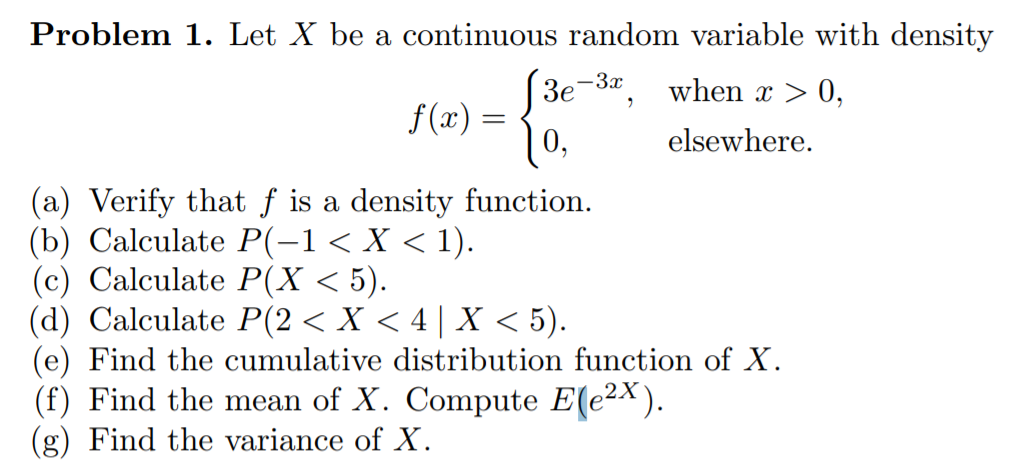


Solved Problem 1 Let X Be A Continuous Random Variable W Chegg Com



3 Verify Whether The Following Are Zeroes Of The Polynomial Scholr



Zeros Of Polynomials Matching Equation To Graph Video Khan Academy



Ncert Class Ix Polynomials Exercise 2 Question No 3 Youtube



Verify Whether The Following Are Zeroes Of The Polynomial Indicated Against Them 1 P X 3x 1 X Brainly In
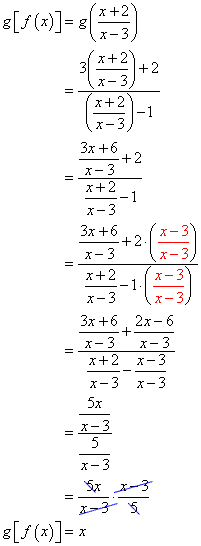


Verifying If Two Functions Are Inverses Of Each Other Chilimath
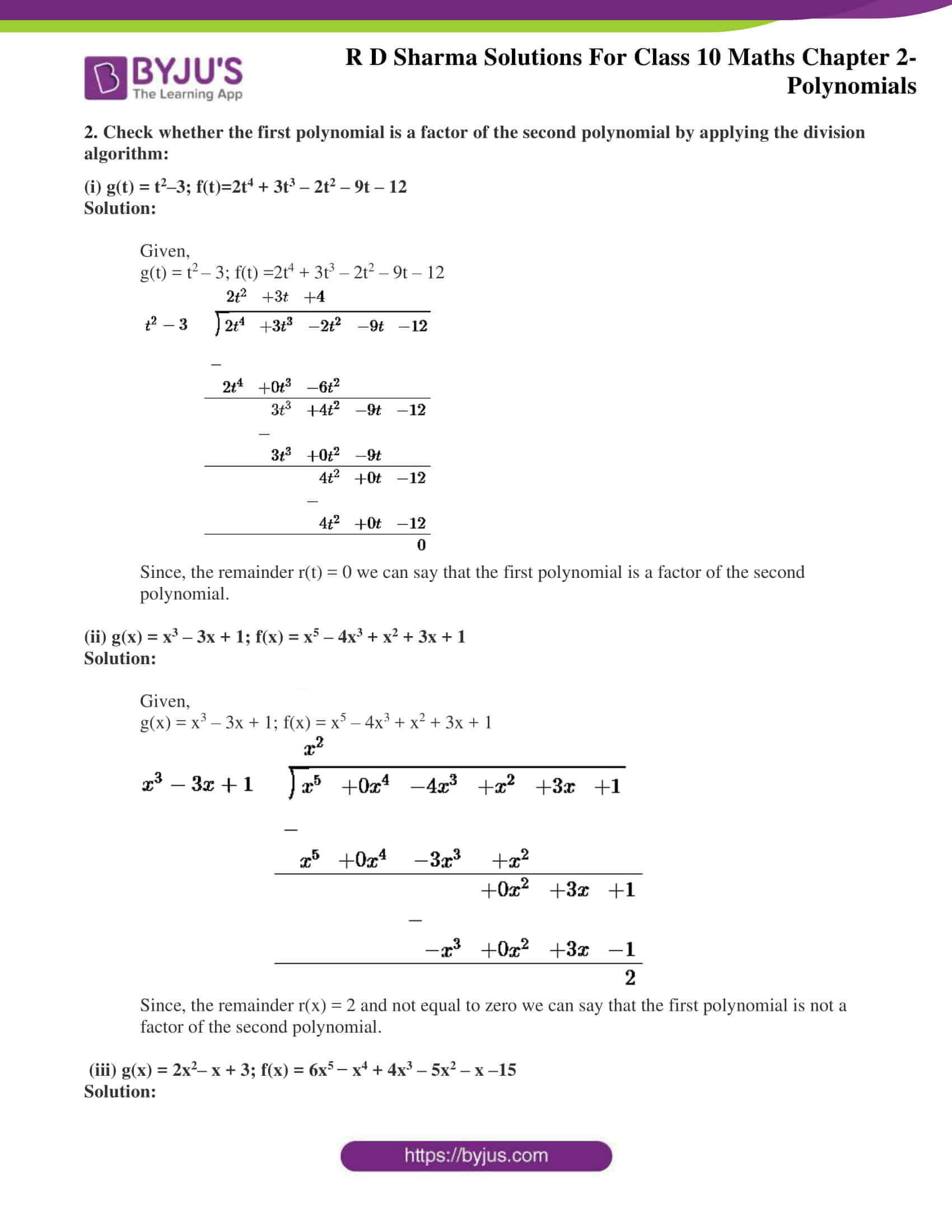


Rd Sharma Solutions For Class 10 Chapter 2 Polynomials Get Pdf


Http Www Gowthambed Org Assignments X Maths Polynomial D1 Pdf



P X 3x 1 X 1 3 P X X
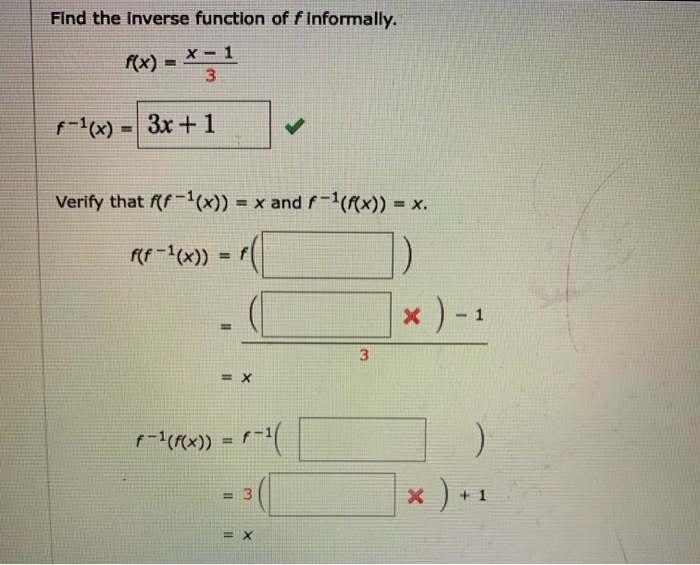


Solved Find The Inverse Function Of F Informally 3 F1 X Chegg Com



Linear Equations In One Variable And Rhs 2 6 2 Lhs Rhs When X 36 Solve
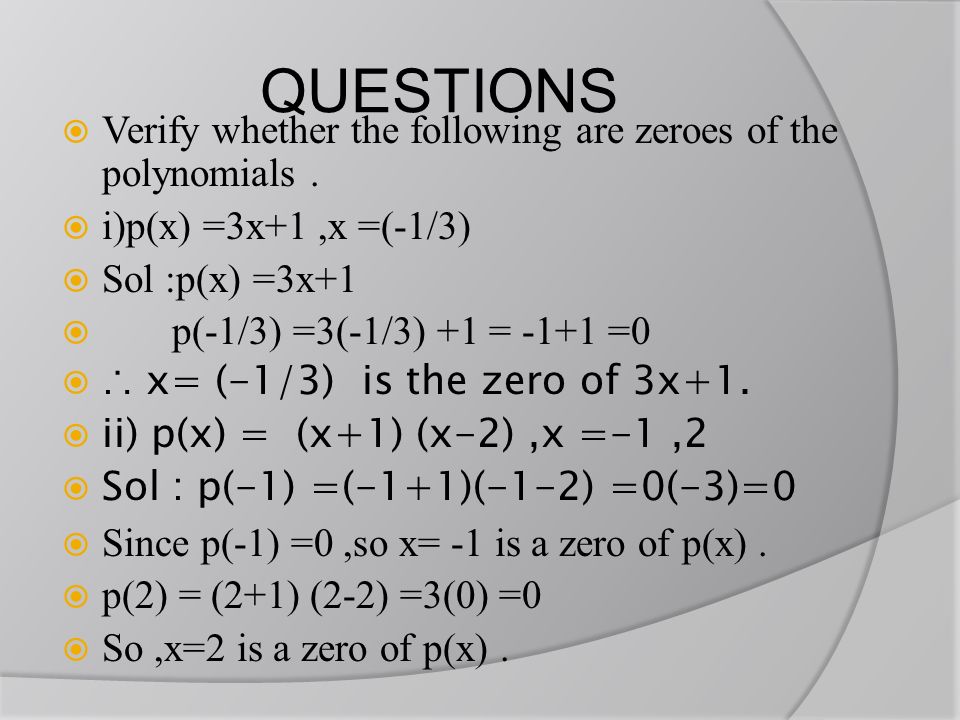


Polynomials Ppt Video Online Download



Divide X 3 3x 2 3x 5 By X 1 X 2 And Verify The Division Algorithm



Systems Of Equations With Substitution Y 5x 8 10x 2y 2 Video Khan Academy



Divide The Polynomial P X X4 3x Square 4 X 5 By The Polynomial G X X Square 1 X And Find The Brainly In
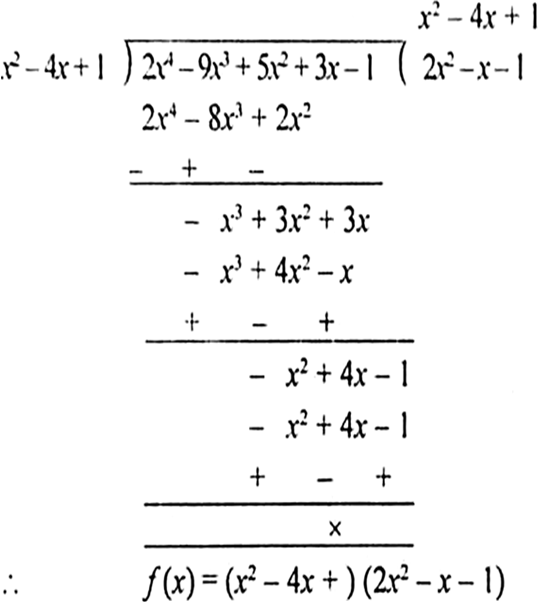


Find All The Zeroes Of 2x4 9x3 5x2 3x 1 If Two Of Its Zeroes Are From Mathematics Polynomials Class 10 Cbse



Verify That P X 3x 1 X 1 3 Math Polynomials Meritnation Com



Find The Remainder When P X X 3 6x 2 14x 3 Is Divisible By G X 1 2x And Verify The Result By Long Division



Question 27 Cbse Class 10 Sample Paper For Boards Maths Basic


Find The Zeroes Of The Following Polynomials By Factorisation Method And Verify The Relations Between The Zeroes And The Coefficients Of The Polynomials Studyrankersonline



Divide The Polynomial 3x 4 4x 3 3x 1 By X 1 Youtube
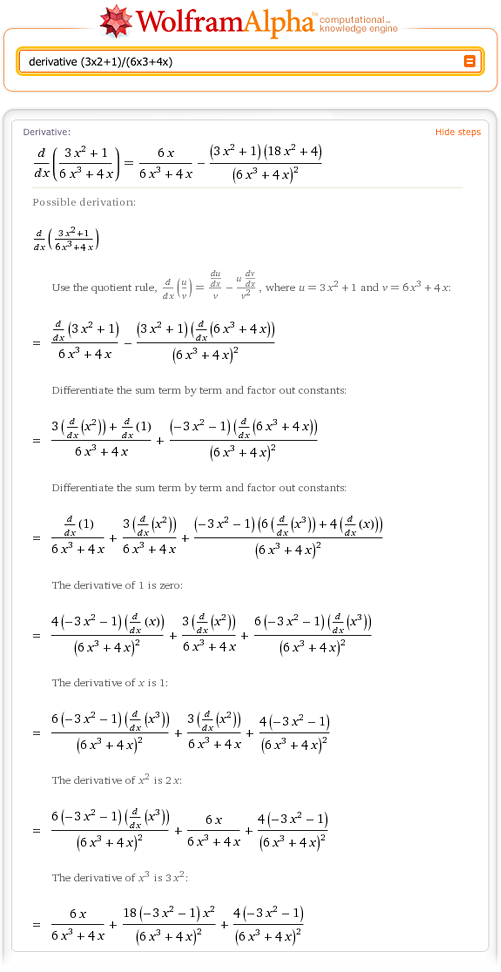


Step By Step Math Wolfram Alpha Blog



Verify That 3 1 1 3 Are The Zeros Of The Cubic Polynomial P X 3x 3 5x 2 11x 3 Verify The Youtube
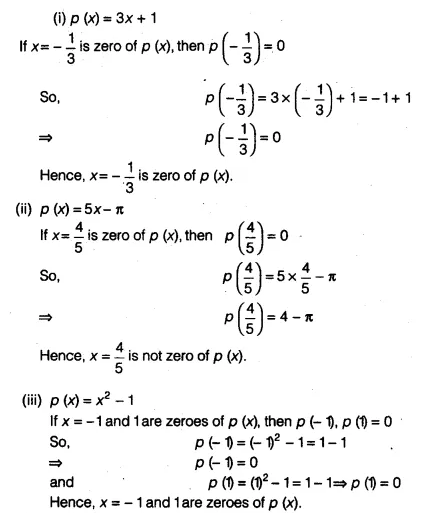


Verify Whether The Following Are Zeroes Of The Polynomial Indicated Against Them Cbse Class 9 Maths Learn Cbse Forum



Check Whether G X Is A Factor Of P X By Dividing Polynomial P X By G X Where P X X 5 4x 3 X 2 3x 1 G X X 3 3x 1 Mathematics Topperlearning Com O41v2yhh



Zero Of Polynomial P X 3x 1 Is Brainly In



Verifiy That 1 1 3 Are The Zeroes Of The Cubic Polynomial X3 3x2 X 3 And Check The Relationship Brainly In
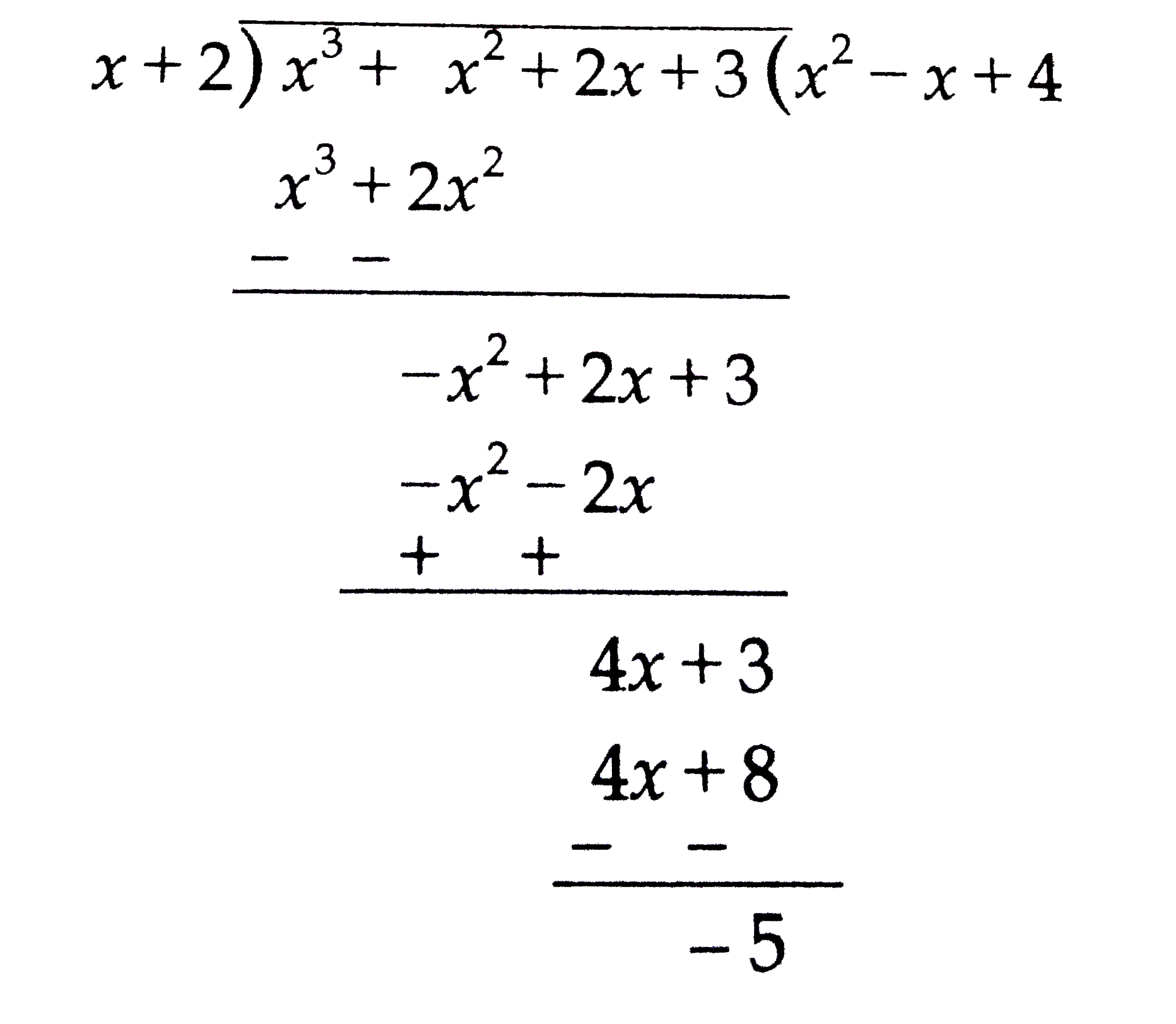


Verify Division Algorithm For The Polynomials Br P X X 3


Cbse 9 Math Cbse Polynomials Ncert Solutions



Verify Whether This Is Zeroes Of The Polynomial 3 Math Polynomials Meritnation Com


Http Www Mpsaz Org Rmhs Staff Lxcoleman Trig Test Practice Files Review Chapter 3 Notes Solutions Pdf



P X 3x 1 X 1 3 Verify Zeroes Of Polynomial Show Method Also Brainly In



Verify Whether The Following Are Zeroes Of The Polynomial Indicated Against The


Www Utdallas Edu Efrom Solhw Pdf


Find The Zeros Of The Polynomial



Ex 2 2 3 Verify Whether Following Are Zeroes Of The Ex 2 2



Ex 2 2 3 Verify Whether Following Are Zeroes Of The Ex 2 2


3 Verify Whether The Followin See How To Solve It At Qanda
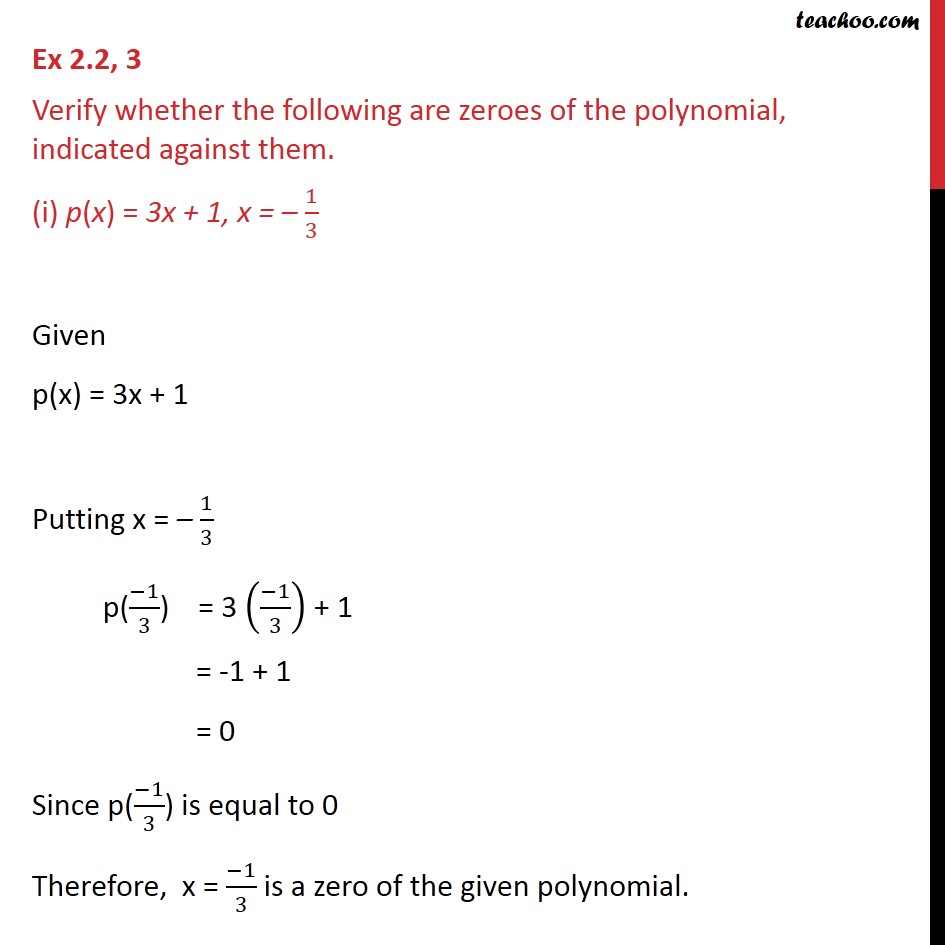


Ex 2 2 3 Verify Whether Following Are Zeroes Of The Ex 2 2
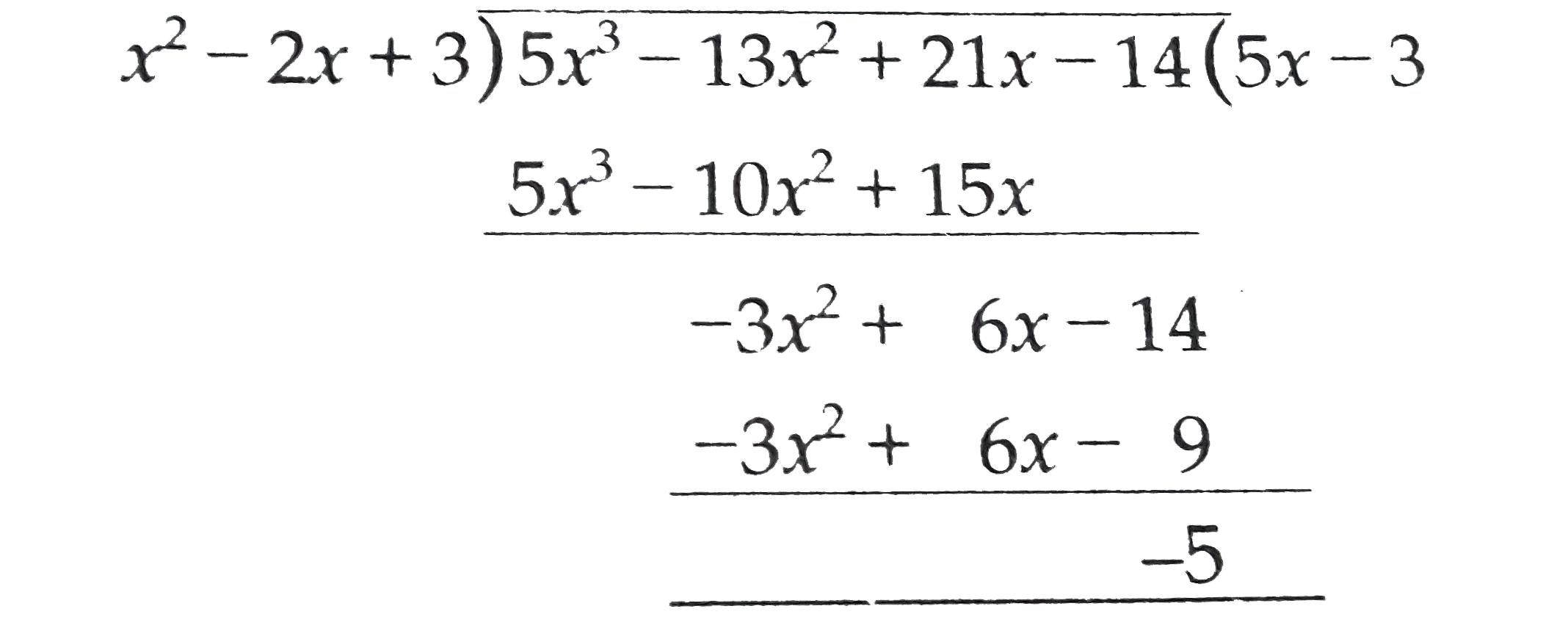


Divide 5x 3 13x 2 21x 14 By 3 2x X 2 And Verify The D
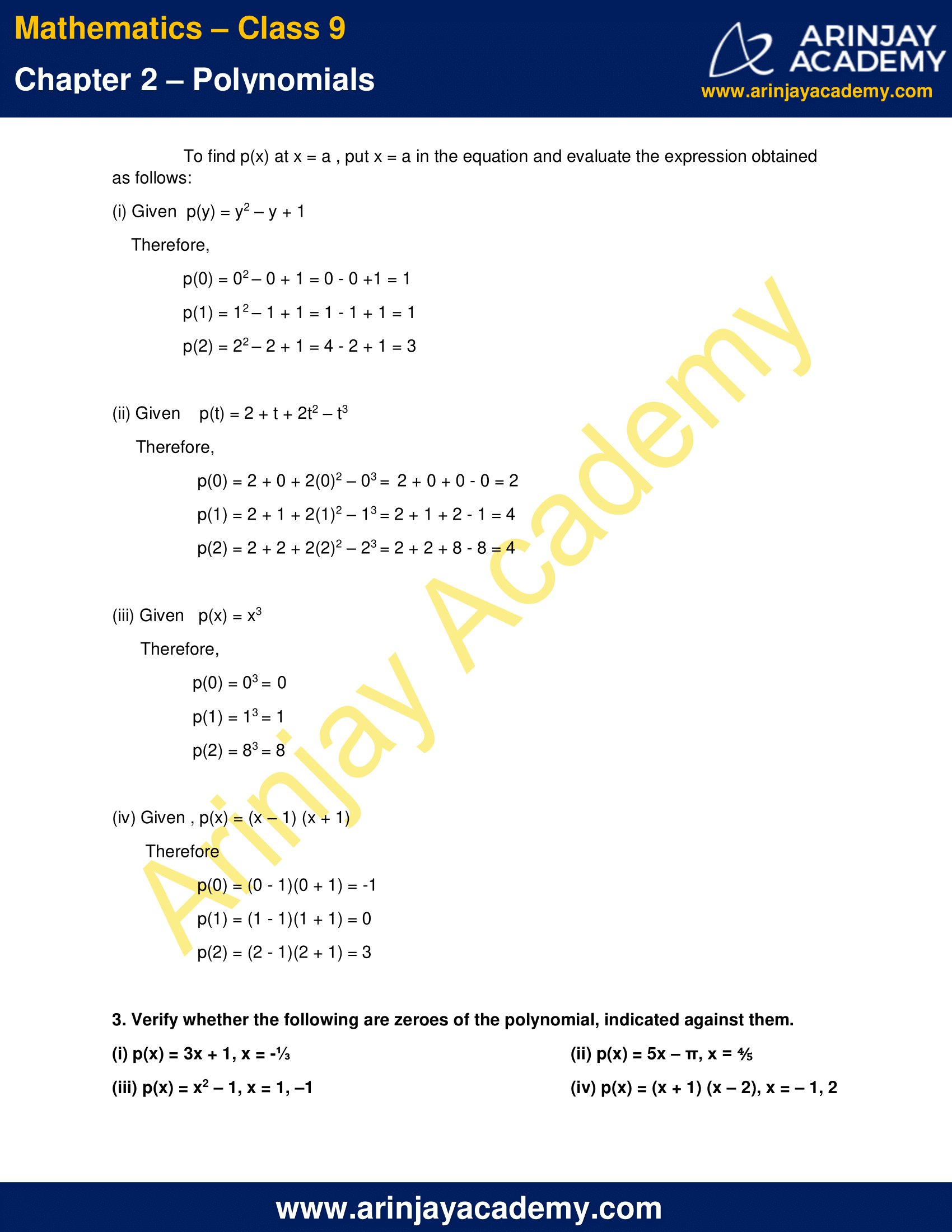


Ncert Solutions For Class 9 Maths Chapter 2 Exercise 2 2 Polynomials



Kseeb Sslc Solutions For Class 10 Maths Polynomials Cbse Tuts



Verify That 5 2 And 1 3 Are The Zeros Of The Cubic Polynomial P X 3x 3 Youtube


Cbse 10 Math Ncert Solutions



P04ndtip4pfpwm



Ex 5 8 5 Verify Mean Value Theorem F X X3 5x2 3x



Check Whether G X X 2 3x 1 Is A Factor Of The Polynomial P X 3x 4 5x 2 7x 2 2x 2 By Dividing P X By G X



Class 9 Polynomial 2 Coordinate Geometry Linear Equation In Two Variables Euclid S Geometry Lines And Angles Notes



Verifying Solutions To Differential Equations Video Khan Academy



Zero Or Root Of A Polynomial Degree Of A Zero Polynomial If X 1 3 F X 3x 1 Verify Zop Class 9 Youtube



Verify That 3 1 And 1 3 Are The Zeroes Of The Cubic Polynomial P X 3xcube 5xsquare 11x 3 And Brainly In



Verify That 3 1 And 1 1 By 3 Are The Zeros Of The Cubic Polynomial P Of X Equal To 3 X Cube Minus Brainly In



Example 5 Optional Verify 3 1 1 3 Are Zero Of Cubic Polynomial



Verify That 1 1and3 Are Zeroes Of The Cubic Polynomial P X X3 3x2 X 3 And Then Verify The Relationship Between The Zeroes And Math Polynomials Meritnation Com
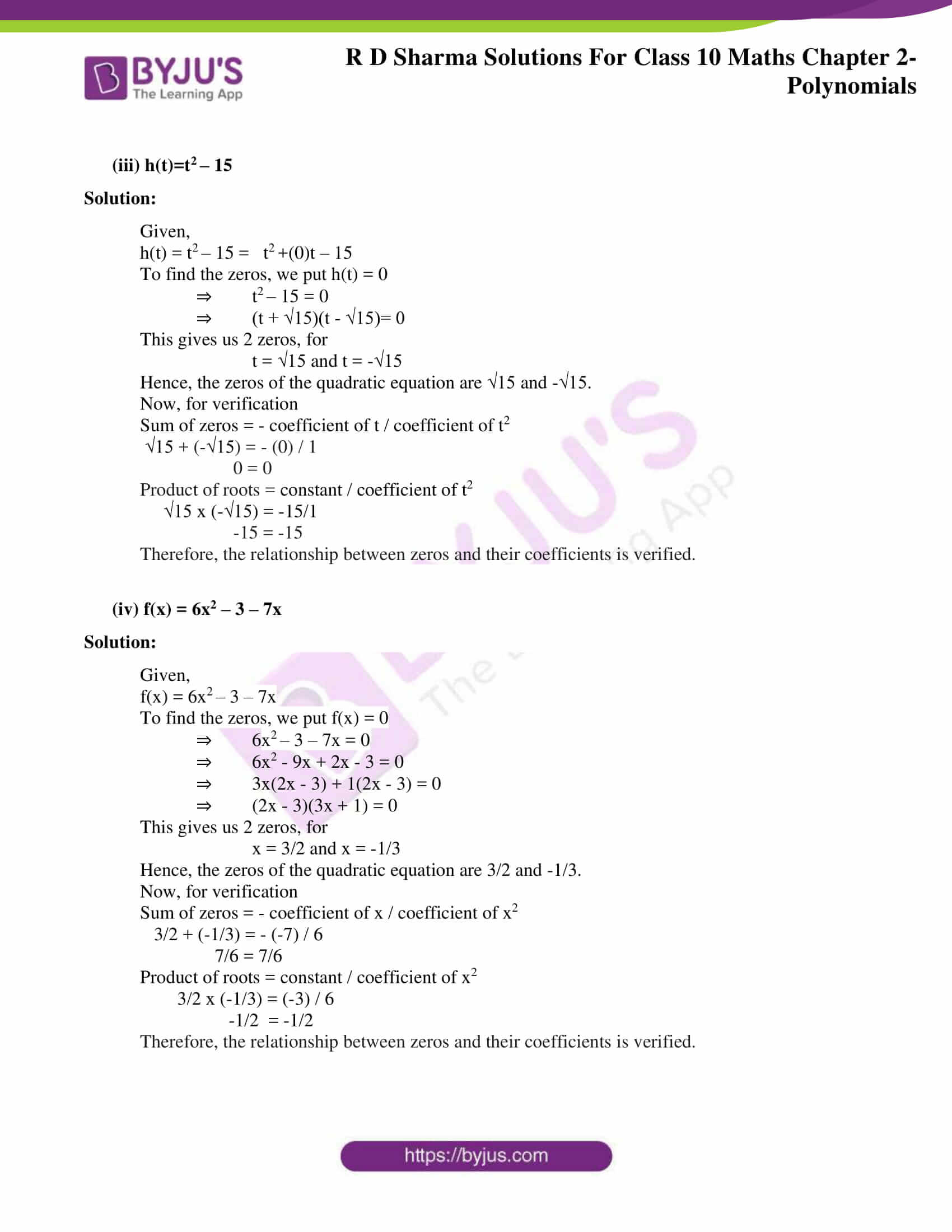


Rd Sharma Class 10 Solutions Maths Chapter 2 Polynomials Exercise 2 1



Ncert Solutions For Class 9 Maths Chapter 2 Polynomials Toppers Bulletin
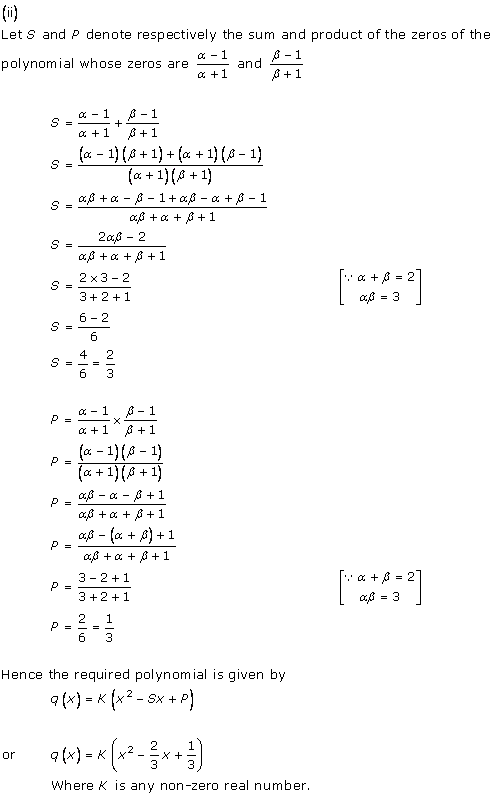


Chapter 2 Polynomials Rd Sharma Solutions For Class 10 Mathematics Cbse Topperlearning
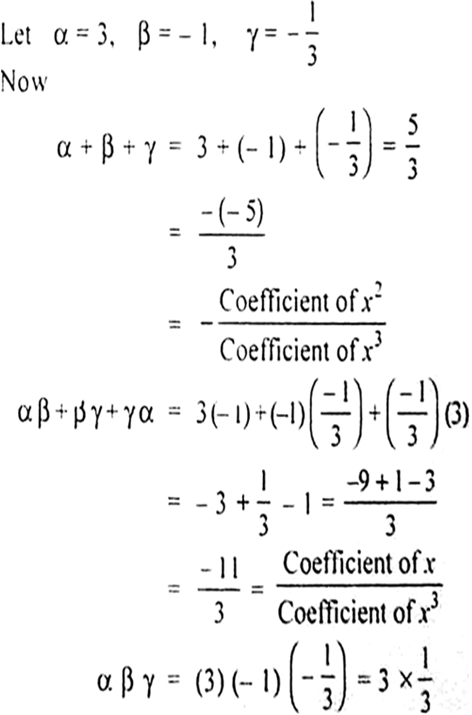


Verify That 3 1 Are The Zeroes Of The Cubic Polynomial P X 3x3 5x2 11x 3 Then Verify The Relationship Between The Zeroes And The Coefficients From Mathematics Polynomials Class 10 Cbse



Ncert Solutions For Class 9 Maths Chapter 2 Polynomials Toppers Bulletin



Find The Product And Verify For X 1 And Y 3 X 2y X 1 X 4
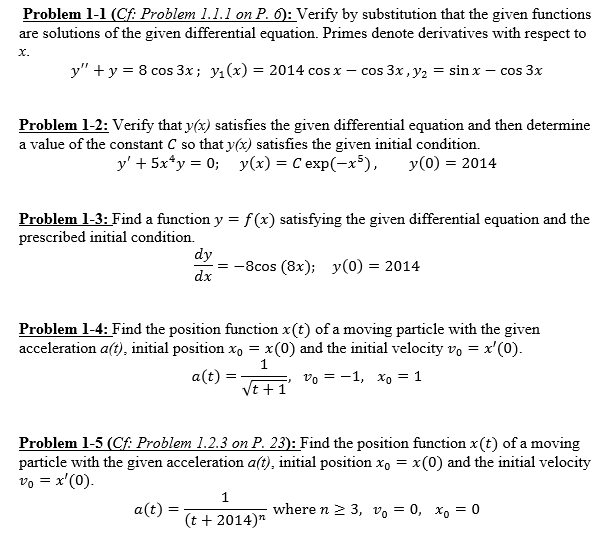


Solved Verify By Substitution That The Given Functions Ar Chegg Com



Rs Aggarwal Class 10 Solutions Chapter 2 Polynomials Cbse Sample Papers Ncert Solutions Educationapp In


Search Q Find The Zero Of The Polynomial In Each Of The Following Cases Tbm Isch



Example 5 Optional Verify 3 1 1 3 Are Zero Of Cubic Polynomial



Verify Whether The Following Are Zeroes Of The Polynomial Indicated Against Them I P X 3x Youtube



Ex 2 2 3 Verify Whether Following Are Zeroes Of The Ex 2 2


Q Tbn And9gcqt4hl9siol3ctv9ixnqh7jrb3wytyihbdngrrndek Usqp Cau



Show That 2 And 1 3 Are The Zeros Of Polynomial P X 3x 2 5x 2 Brainly In



Verify Whether The Following Are Zeros Of The Polynomial Indicated Against Them Q 3 I Ii Youtube



Verify Whether The Following Are Zeroes Of The Polynomial Indicated Against Them I P X 3x Youtube



Find A Zero Of The Polynomial P X 2x 1 Youtube



Find A Quadratic Polynomial Whose Zeros Are 1 And 3 Verify The Relation Between L Youtube
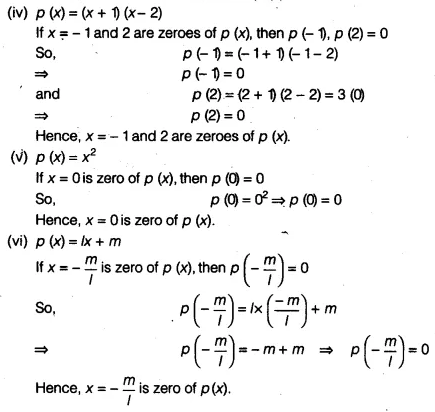


Verify Whether The Following Are Zeroes Of The Polynomial Indicated Against Them Cbse Class 9 Maths Learn Cbse Forum


コメント
コメントを投稿